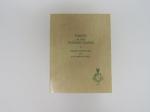|
This section contains 755 words (approx. 3 pages at 300 words per page) |

|
The pituitary gland is sometimes called the "master" gland of the endocrine system, because it controls the functions of many other endocrine glands. It is a small, oval gland, no larger than a pea, and is located at the base of the brain. It is attached to the hypothalumus (a part of the brain that affects the pituitary gland) by nerve fibers.
Anatomically, the pituitary gland consists of three sections: the anterior lobe, the intermediate lobe and the posterior lobe. The anterior and posterior lobes are derived from different embryological sources. The anterior lobe, or adenohypophysis, grows upward from the pharyngeal tissue at the roof of the mouth. The posterior lobe, or neurohypophysis, grows downward from neural tissue. It is structurally continuous with the hypothalamus, to which it remains attached by the hypophyseal, or pituitary, stalk. The intermediate lobe also originates in...
|
This section contains 755 words (approx. 3 pages at 300 words per page) |

|


